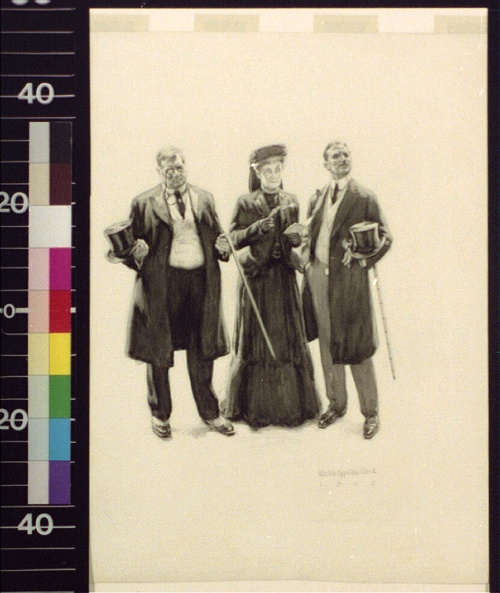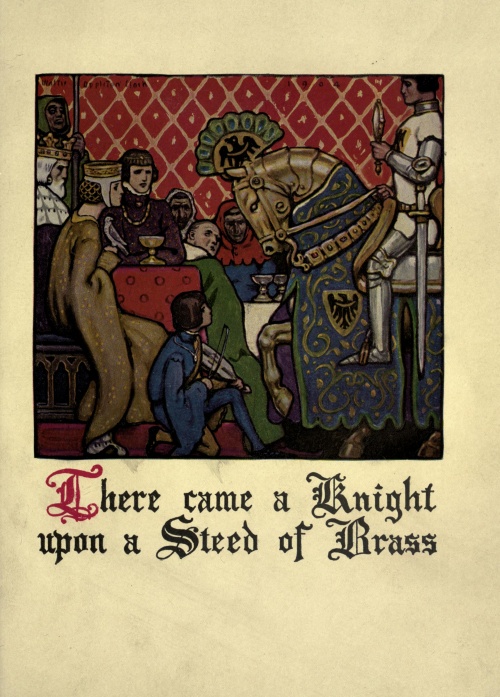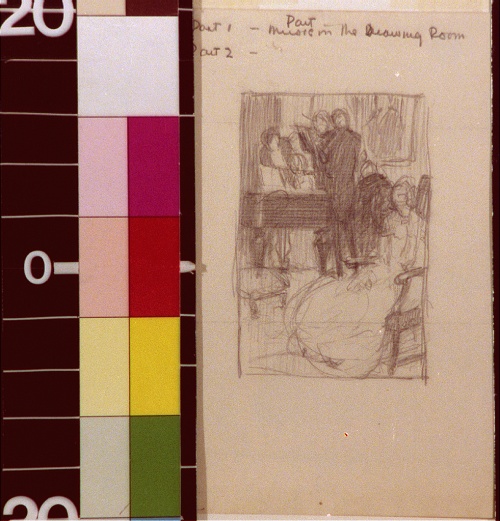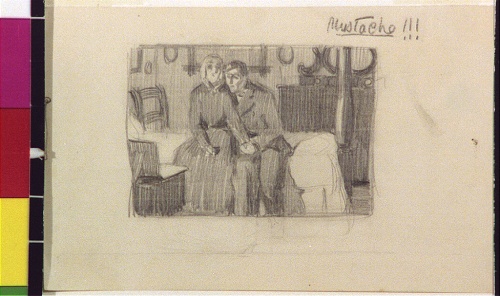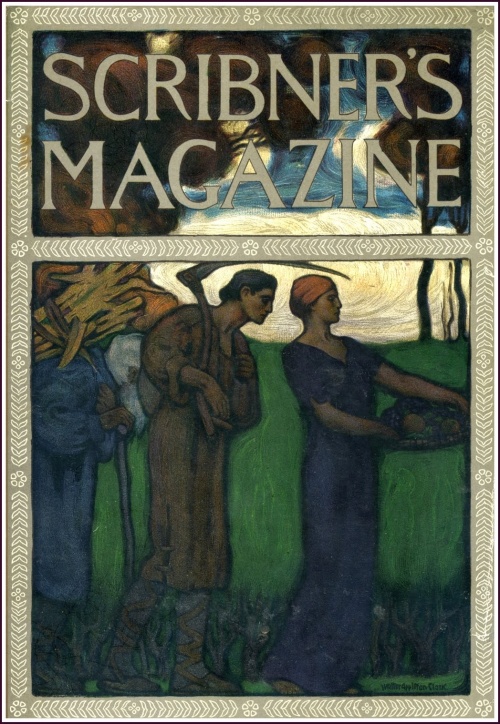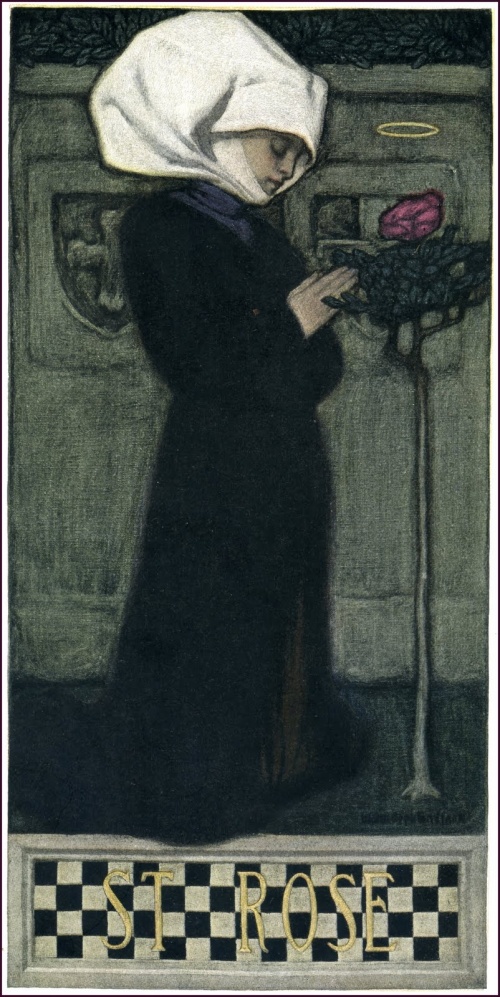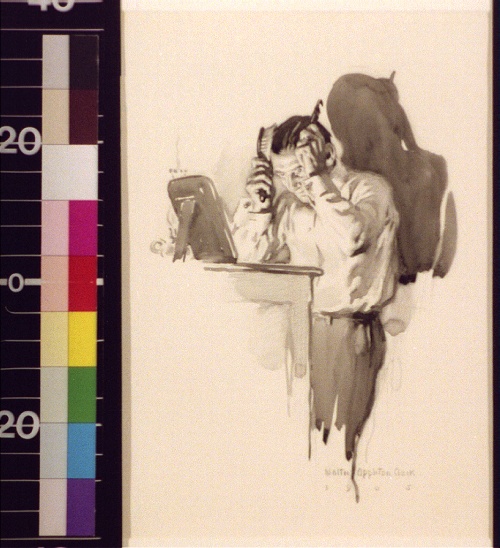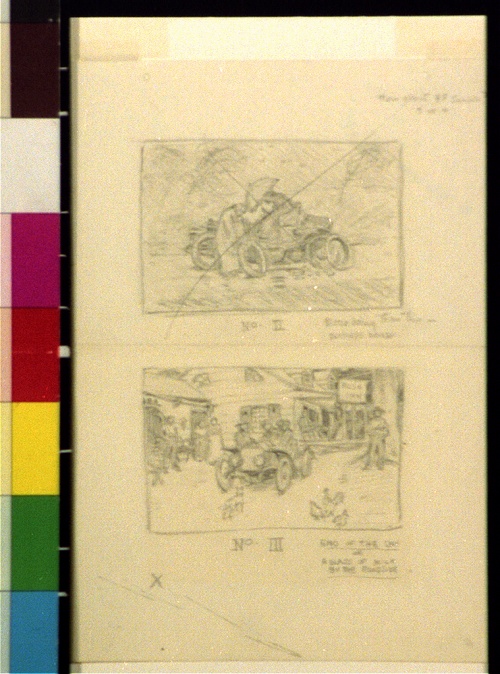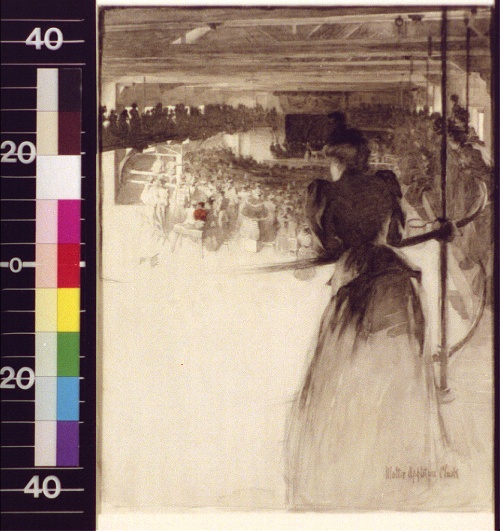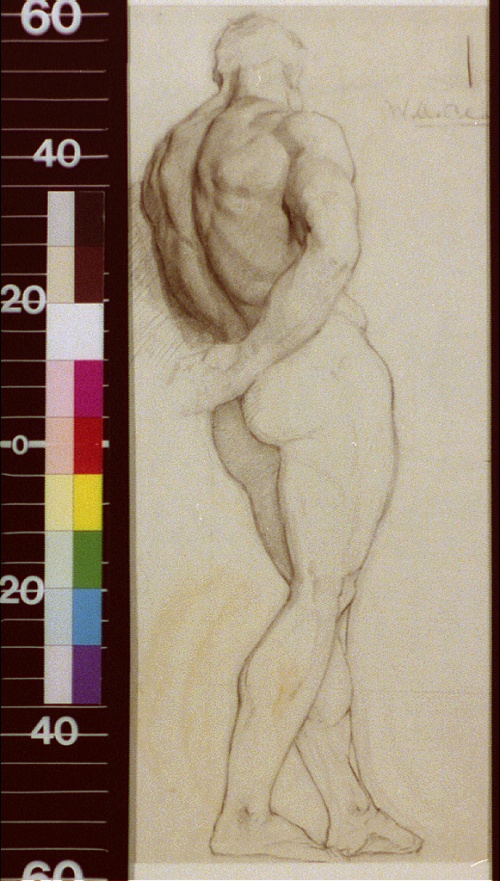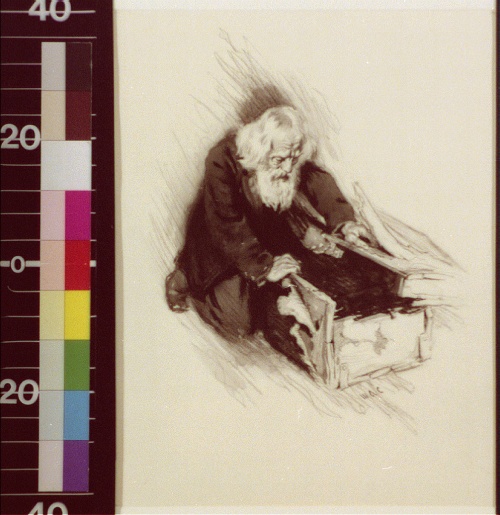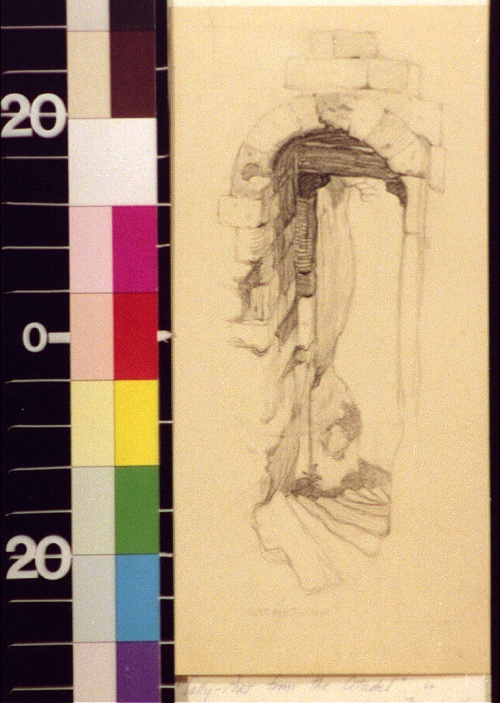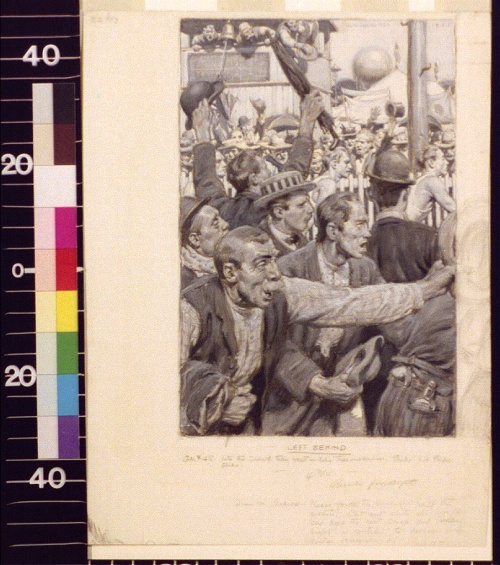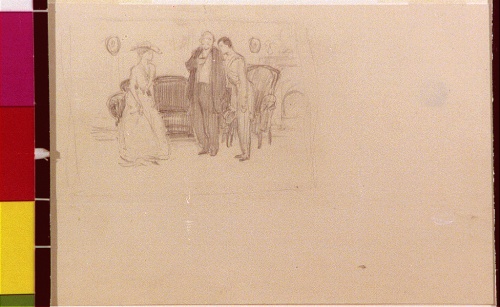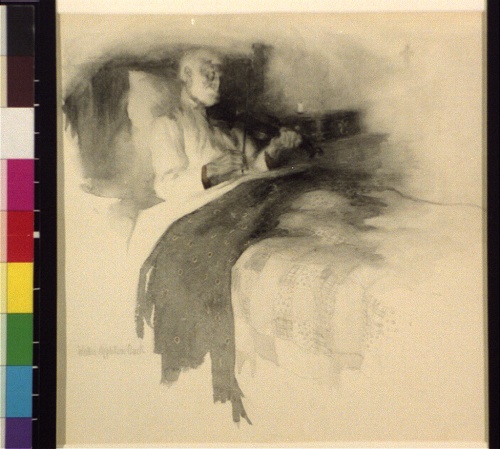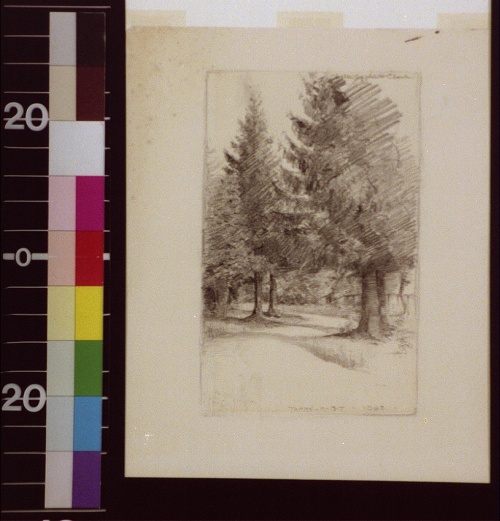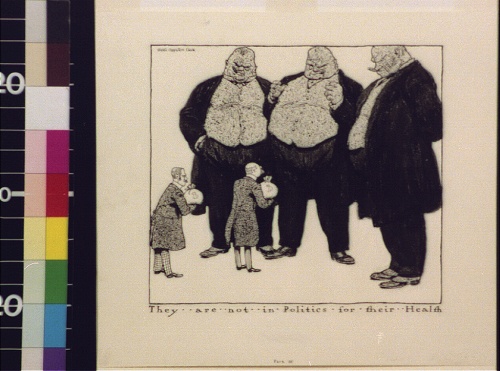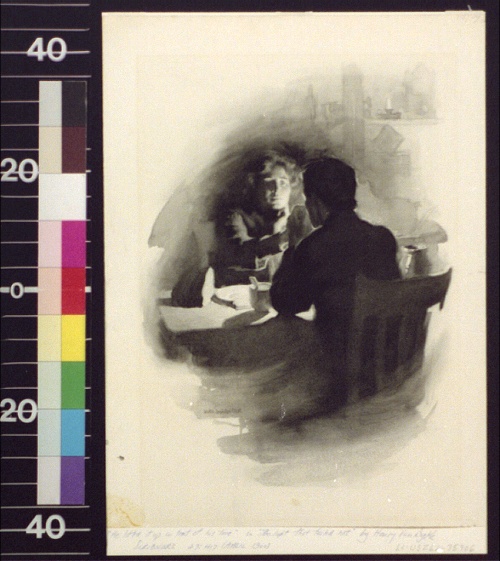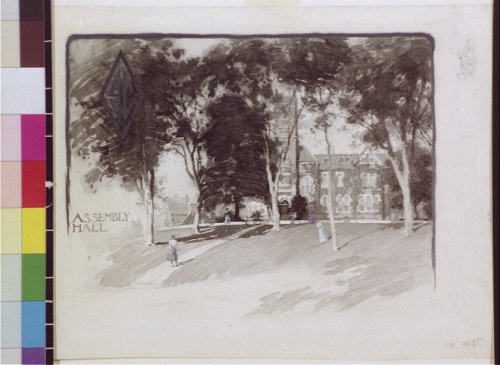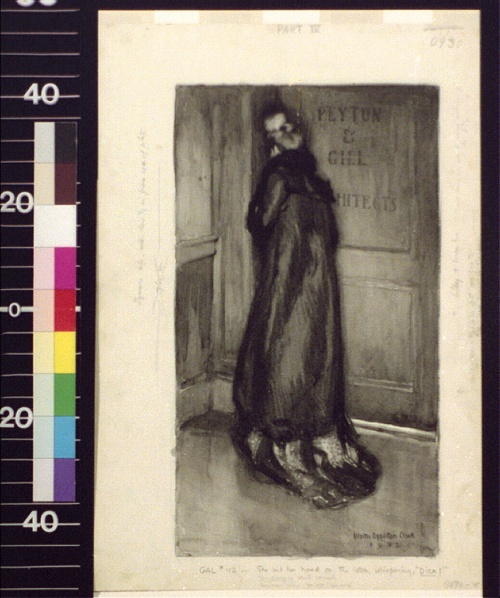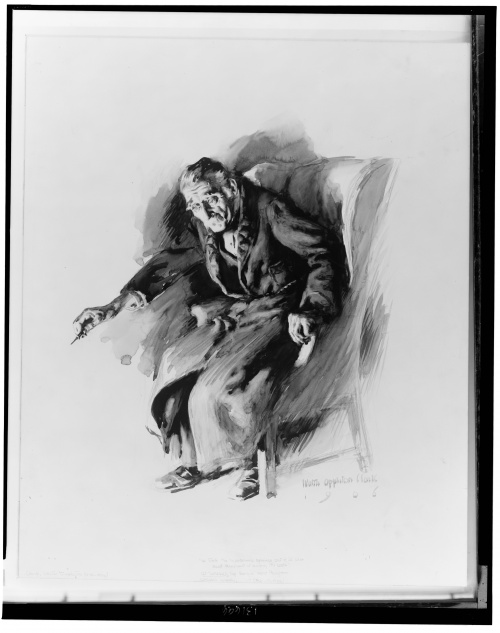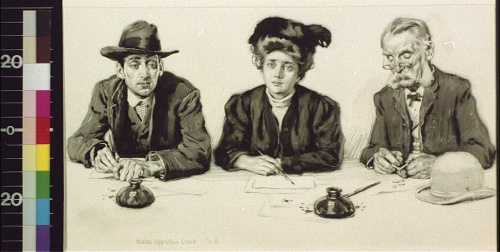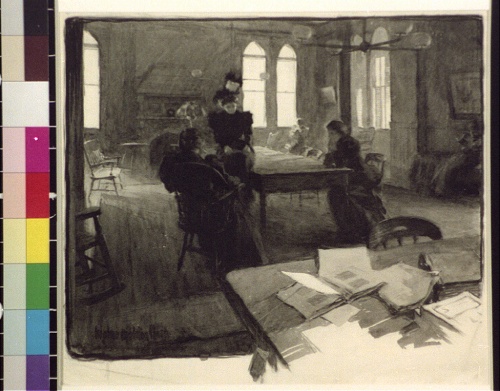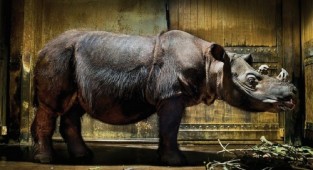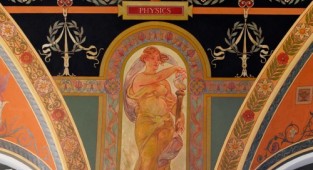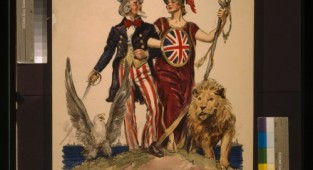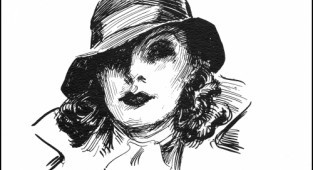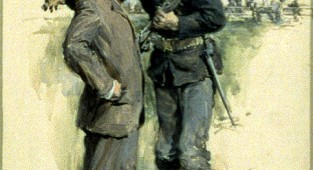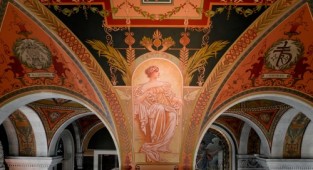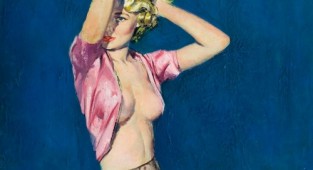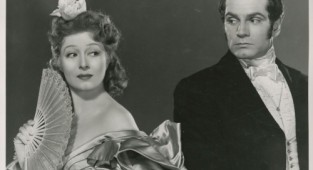Walter Appleton Clark (1876-1906) (135 работ)
Разрешение картинок от 1028x267px до 3279x4096px
Walter Appleton Clark was born June 24, 1876 and died December 26, 1906. He began his brief career with studies at the Art Students League in New York in 1894. He studied under H. Siddons Mowbray, who was classically trained in Paris and instilled in Clark the basics of good draftsmanship.
Clark's classmates included James Montgomery Flagg who was already selling to Life and Judge and was already known as a bon vivant, man about town. Flagg painted the portrait of Clark, above right, and undertook the daunting task of showing the 18-year-old Clark the wonders and pleasures of New York.
The Art Students League was a source of new blood for the insatiable illustrated magazines of the day. At the League, Clark's class work was spotted by the art editor of Scribner's magazine. He gave Walter a commission to provide illustrations for a Rudyard Kipling story, ".007", about a new locomotive. It was the lead story in the August 1897 issue of Scribner's and the image at left was one of three that marked the beginning of a brilliant, albeit too short career.
He stayed almost exclusively with Scribner's for four years illustrating for the magazine and for books. The image at left is from "The Ruling Passion" by Henry Van Dyke - 1901. It features one of the traits that made Clark such an interesting artist and one that was to influence illustrators to this day. Clark took the notion of "vignetting" (letting the painted image fade into the background at the edges, usually in an oval or other geometric shape) one step further. He simply omitted much of the non-essential detail and used the white of the page to frame and focus his picture. It was a novel concept at the time - one that Cornwell would adopt with excellent results in the Twenties and Thirties.
At the ripe old age of 23, he returned to the Art Students League as an instructor. Despite a great success there as a teacher, he only stayed for 1899 and went back to full-time illustrating the following year. His work was now extremely popular. In 1902-1903 he was providing illustrations for two series running simultaneously in Scribner's, The "Fortunes of Oliver Horn" and "Captain Macklin" by two of the most popular writers of the day. His drawings were often chosen for the coveted frontispiece position in the magazine. It was the first image the reader saw upon opening the magazine and was reserved for premier artists. To give you an idea of how well Clark was regarded, he was appearing in the same issues of the same magazines as Howard Pyle, Howard Chandler Christy, A.B. Frost, and Jules Guerin. And this was just five years after he began his career. It's difficult to convey how respected Clark was in his day, but, had he lived, it's easy to see him in the same class as Parrish and Wyeth. The image above right is from "The Fortunes of Oliver Horn", by F. Hopkinson Smith and appeared in the May 1902 issue of Scribner's. The chapters were collected into book form in August 1902 with eight b&w plates.
The second half of 1903 and all of 1904 were spent in Europe as a somewhat postponed honeymoon, Clark having married in August of 1902.While there he continued to provide material for Scribner's and Harpers and prepared what he considered studies for proposed murals illustrating The Canterbury Tales. These six color plates, which he also considered to be his most important work, were published as a book by Fox, Duffield in 1904. It was to be the only color-plate book he would illustrate. (See more plates from this book in ImageS #5.)
By 1905, Clark had returned to New York and expanded his market to include Harpers and Colliers. Again, it is difficult to conjure up the illustration market of the day, with the expanding weekly magazines like The Saturday Evening Post, Colliers and The Ladies Home Journal competing for readers' attention and loyalty. One of the main weapons in these battles was the illustrator. Fierce competition and exclusivity deals were struck. The Post had Rockwell and J.C. Leyendecker, but
"in September of 1906 the name of Walter Appleton Clark was added to a small coterie of well-known artists who worked exclusively for Colliers. This group included Charles Dana Gibson, Frederick (sic) Remington, Jessie Willcox Smith, F.X. Leyendecker, Arthur B. Frost, and Maxfield Parrish."*
Clark was in good company for a young artist of barely 30. His covers and cartoons and illustrations were becoming more recognizable to the readers and the posteresque Colliers covers provided him more and more personal expression. His mastery of illustration was evident in the paintings for his last book, Legends of the City of Mexico. This series of six macabre interpretations of grim and horrific tales still has the capability of shock today. Painted in 1906, these were run as illustrations posthumously in Harpers starting in 1907 and eventually produced in book form in 1910.
1906 was his most productive year. He was either hitting his stride as an illustrator or he was feverishly painting "almost as if he somehow sensed that time was running short and there was so much that he wanted still to accomplish."* I think he was just feeling his oats and reveling in his youth and prowess. He had achieved success at an early age and was positioning himself to move into the painting of murals, which he felt would offer new challenges.
Sadly, he was not to go on to glory and lasting fame. After a seven week bout with typhoid fever, he died the day after Christmas at the age of 30. The more I peruse his work, the more I believe that his work would have been collected into coffee table books like Parrish and Leyendecker and Flagg if he had only survived. His final work, whether pen and ink, black and white watercolor, or his infrequent oil paintings, shows the confidence of a master and the heart of a poet.
Walter Appleton Clark was born June 24, 1876 and died December 26, 1906. He began his brief career with studies at the Art Students League in New York in 1894. He studied under H. Siddons Mowbray, who was classically trained in Paris and instilled in Clark the basics of good draftsmanship.
Clark's classmates included James Montgomery Flagg who was already selling to Life and Judge and was already known as a bon vivant, man about town. Flagg painted the portrait of Clark, above right, and undertook the daunting task of showing the 18-year-old Clark the wonders and pleasures of New York.
The Art Students League was a source of new blood for the insatiable illustrated magazines of the day. At the League, Clark's class work was spotted by the art editor of Scribner's magazine. He gave Walter a commission to provide illustrations for a Rudyard Kipling story, ".007", about a new locomotive. It was the lead story in the August 1897 issue of Scribner's and the image at left was one of three that marked the beginning of a brilliant, albeit too short career.
He stayed almost exclusively with Scribner's for four years illustrating for the magazine and for books. The image at left is from "The Ruling Passion" by Henry Van Dyke - 1901. It features one of the traits that made Clark such an interesting artist and one that was to influence illustrators to this day. Clark took the notion of "vignetting" (letting the painted image fade into the background at the edges, usually in an oval or other geometric shape) one step further. He simply omitted much of the non-essential detail and used the white of the page to frame and focus his picture. It was a novel concept at the time - one that Cornwell would adopt with excellent results in the Twenties and Thirties.
At the ripe old age of 23, he returned to the Art Students League as an instructor. Despite a great success there as a teacher, he only stayed for 1899 and went back to full-time illustrating the following year. His work was now extremely popular. In 1902-1903 he was providing illustrations for two series running simultaneously in Scribner's, The "Fortunes of Oliver Horn" and "Captain Macklin" by two of the most popular writers of the day. His drawings were often chosen for the coveted frontispiece position in the magazine. It was the first image the reader saw upon opening the magazine and was reserved for premier artists. To give you an idea of how well Clark was regarded, he was appearing in the same issues of the same magazines as Howard Pyle, Howard Chandler Christy, A.B. Frost, and Jules Guerin. And this was just five years after he began his career. It's difficult to convey how respected Clark was in his day, but, had he lived, it's easy to see him in the same class as Parrish and Wyeth. The image above right is from "The Fortunes of Oliver Horn", by F. Hopkinson Smith and appeared in the May 1902 issue of Scribner's. The chapters were collected into book form in August 1902 with eight b&w plates.
The second half of 1903 and all of 1904 were spent in Europe as a somewhat postponed honeymoon, Clark having married in August of 1902.While there he continued to provide material for Scribner's and Harpers and prepared what he considered studies for proposed murals illustrating The Canterbury Tales. These six color plates, which he also considered to be his most important work, were published as a book by Fox, Duffield in 1904. It was to be the only color-plate book he would illustrate. (See more plates from this book in ImageS #5.)
By 1905, Clark had returned to New York and expanded his market to include Harpers and Colliers. Again, it is difficult to conjure up the illustration market of the day, with the expanding weekly magazines like The Saturday Evening Post, Colliers and The Ladies Home Journal competing for readers' attention and loyalty. One of the main weapons in these battles was the illustrator. Fierce competition and exclusivity deals were struck. The Post had Rockwell and J.C. Leyendecker, but
"in September of 1906 the name of Walter Appleton Clark was added to a small coterie of well-known artists who worked exclusively for Colliers. This group included Charles Dana Gibson, Frederick (sic) Remington, Jessie Willcox Smith, F.X. Leyendecker, Arthur B. Frost, and Maxfield Parrish."*
Clark was in good company for a young artist of barely 30. His covers and cartoons and illustrations were becoming more recognizable to the readers and the posteresque Colliers covers provided him more and more personal expression. His mastery of illustration was evident in the paintings for his last book, Legends of the City of Mexico. This series of six macabre interpretations of grim and horrific tales still has the capability of shock today. Painted in 1906, these were run as illustrations posthumously in Harpers starting in 1907 and eventually produced in book form in 1910.
1906 was his most productive year. He was either hitting his stride as an illustrator or he was feverishly painting "almost as if he somehow sensed that time was running short and there was so much that he wanted still to accomplish."* I think he was just feeling his oats and reveling in his youth and prowess. He had achieved success at an early age and was positioning himself to move into the painting of murals, which he felt would offer new challenges.
Sadly, he was not to go on to glory and lasting fame. After a seven week bout with typhoid fever, he died the day after Christmas at the age of 30. The more I peruse his work, the more I believe that his work would have been collected into coffee table books like Parrish and Leyendecker and Flagg if he had only survived. His final work, whether pen and ink, black and white watercolor, or his infrequent oil paintings, shows the confidence of a master and the heart of a poet.
Предыдущая страница
Следующая страница
